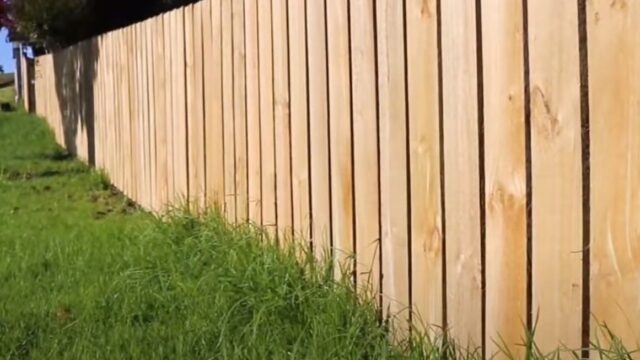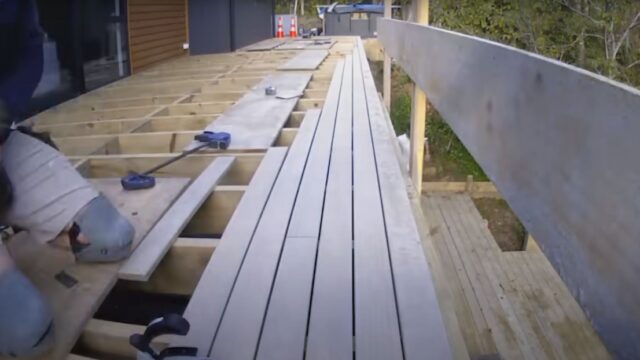Timber Fence Maintenance in Auckland: How Often Is It Needed?
Assessing the Auckland Climate
Auckland’s unique climate, with its humid conditions and frequent rainfalls, means timber fencing can be susceptible to the elements. These conditions often result in a faster deterioration rate, especially if the fence isn’t appropriately treated.
Understanding Timber Varieties
Different timber varieties have varying resistance levels to Auckland’s environment. Hardwoods like kwila or vitex are more resilient than softer woods like pine. When considering timber fencing, it’s essential to discuss wood options with Auckland fence builders to ensure the right choice for longevity.
Maintenance Timeline
Typically, a new wooden fence in good condition would need a thorough check and potential treatment every two years. However, the exact frequency depends on:
- The type of wood used.
- The quality of the initial treatment.
- Exposure to environmental elements.
- The specific Auckland suburb location.
Suburb Specific Considerations
For those residing in coastal areas like North Shore or St Heliers, the increased salt content in the air can be harsher on timber fences. In such areas, annual inspections might be prudent. On the other hand, suburbs like Hillsborough or Glen Eden, away from the coast, may fare slightly better, pushing maintenance checks to the standard two-year mark.
Key Maintenance Activities
Regular timber fence maintenance encompasses:
- Cleaning the wooden fence to remove dirt, mould, and mildew.
- Reapplying sealants or paint to ensure the wood remains protected.
- Checking and tightening or replacing fasteners and nails.
- Addressing any signs of pest infestations, especially in areas close to foliage.
Considering Auckland Council Bylaws
Auckland fence installers are well aware of the local bylaws. In some suburbs, there are regulations on fence heights, designs, and even materials. In Hillsborough, governed by the Puketāpapa Local Board, there are specific codes that homeowners should be aware of when considering fence installation. It’s always advisable to consult with an expert before embarking on any fence building project.
Environmental and Cost Considerations
Maintaining a timber fence not only ensures its longevity but is also eco-friendly. Regular maintenance reduces the need for complete replacements, leading to fewer trees being felled. From a pricing perspective, consistent upkeep can save homeowners significant amounts in the long run. The cost of treating a fence every two years is far less than replacing an entire fence due to neglect.
Professional Input: The Way Forward
Engaging with Auckland fence builders for professional input is crucial. These experts can provide guidance on the best wood varieties, treatments, and maintenance schedules tailored to specific Auckland suburbs. Additionally, they can ensure that all council bylaws are adhered to, making the entire process seamless and compliant.
Summary Table
| Factor | Consideration |
| Climate | Auckland’s humid conditions necessitate regular maintenance. |
| Timber Variety | Hardwoods typically last longer and require less frequent treatment. |
| Maintenance Frequency | Every 1-2 years, depending on the location and wood type. |
| Cost Implications | Regular maintenance reduces long-term replacement costs. |
| Environmental Impact | Regular upkeep is eco-friendly, reducing the need for timber harvesting. |
| Bylaws & Regulations | Specific to suburbs. Consult with Auckland fence installers for guidance. |
Choosing the right fencing Auckland expert to guide you through your timber fence journey can make all the difference. From fence installation to regular upkeep, it’s all about making informed choices that stand the test of time and Auckland’s unique climate.
Frequently Asked Questions on Timber Fence Maintenance in Auckland
How does Auckland’s coastal environment impact timber fences? In coastal areas like North Shore and St Heliers, timber fences are exposed to higher salt content in the air. This can accelerate the weathering process, making timber more susceptible to deterioration. Annual maintenance checks in these regions are recommended.
Are there specific Auckland Council bylaws I should be aware of for fencing? Yes, various Auckland suburbs have specific bylaws related to fencing. For instance, in Hillsborough, there are regulations on fence heights and designs. Always consult with local Auckland fence installers to ensure compliance.
Is it more cost-effective to maintain or replace a timber fence in Auckland? Regular maintenance of a timber fence, usually every 1-2 years, can be more cost-effective in the long run. The costs incurred in treatments and minor repairs are significantly lower than the costs of replacing an entire neglected fence.
Which timber variety is most suitable for Auckland’s climate? Hardwoods like kwila or vitex tend to be more resilient to Auckland’s humid conditions compared to softer woods like pine. It’s beneficial to discuss timber options with a wooden fence builder in Auckland to ensure the right choice.
Can I perform timber fence maintenance myself? While basic cleaning and repainting can be a DIY task, it’s essential to consult with Auckland fence builders for more intensive maintenance activities like pest control, structural assessments, and understanding the best treatment products for the local environment.

